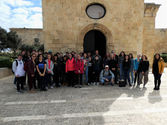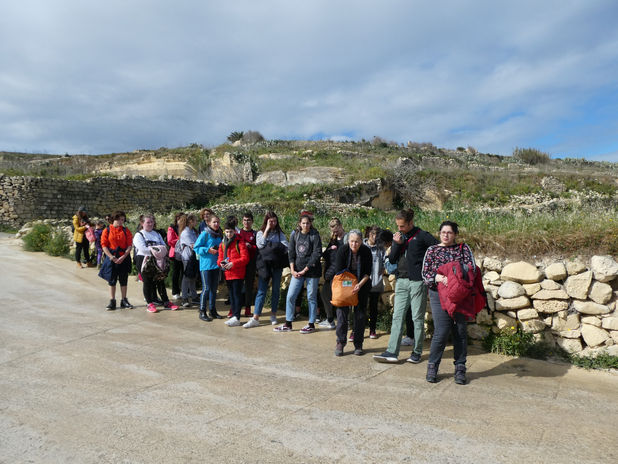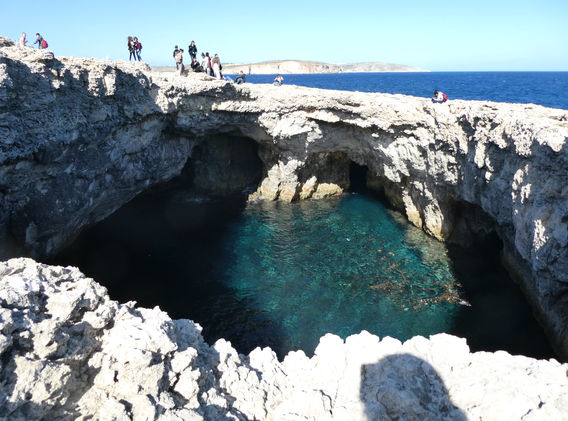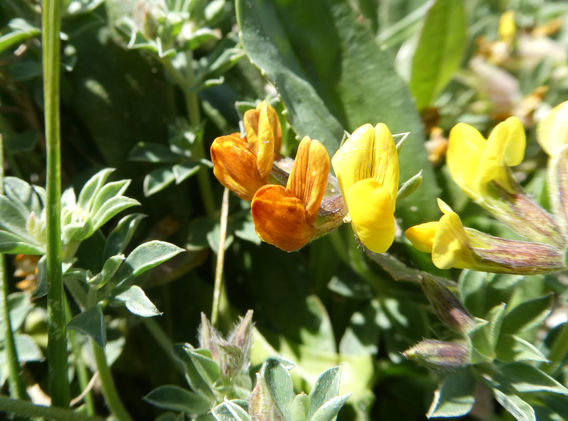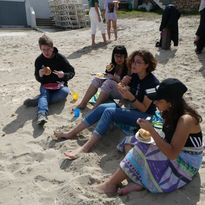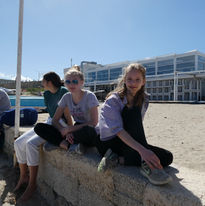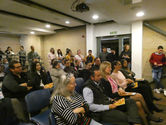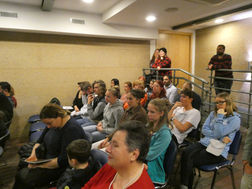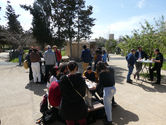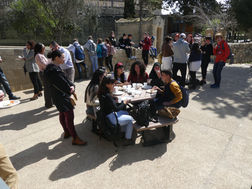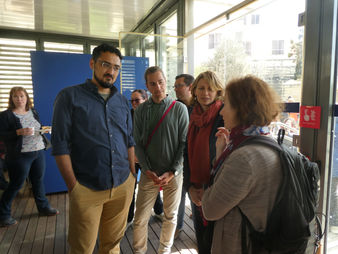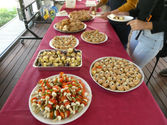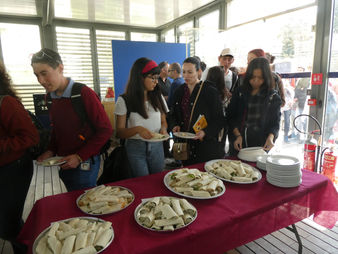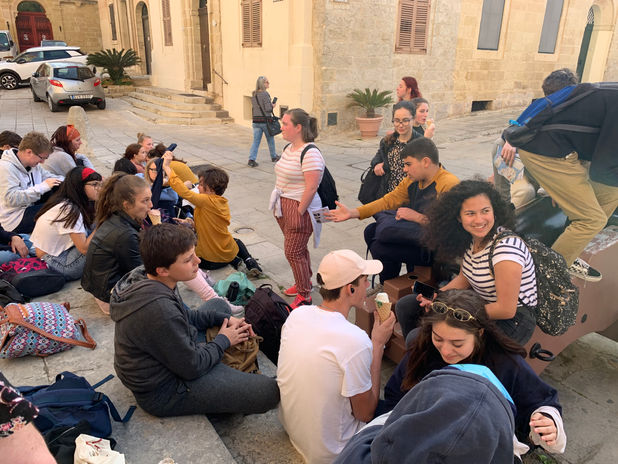
C4 Visit
The Planned Week: 1st -6th March 2020
Preparations for the Visit

Birgu & Mdina Treasure Hunts
Escape Room Team-building


Gifts sponsored by Heritage Malta
Rehearsals for Dissemination Activity

C4 Visit
Socialization Throughout
the Week
The week beginning 1st of march and ending on the 6th was a week to remember. On Sunday we participated in an escape room activity followed by a buffet. This gave us the opportunity to reintroduce ourselves to each other and talk about what we have done since we last saw each other. At first, we were all a bit shy around each other but we soon became confident and started to socialize more.
On Monday we visited the Hagar Qim and Imnajdra temples as well as Ghar Dalam. Thanks to a few lengthy walks that day we were able to converse between ourselves and when we sat down for lunch it was noticeable that the Maltese and Austrian students were starting to mix and socialize more and nobody really stayed in their own groups anymore.
On Tuesday we enjoyed walks and activities around the three cities. The treasure hunt at the end of the day was extremely advantageous for socialization as we were put into teams and we all began helping each other to find places and answer the question. It became quite easy to ask each other for help and to communicate between ourselves on how we were to go about looking for places.
On Wednesday and Thursday, we enjoyed the company of each other during the walks around Gozo and Mellieha and conversations were held throughout both days which were quite enjoyable and beneficial. Through these conversations we learnt more about Austria and even about Malta and it was interesting to hear everybody talk about the things which they like.
On Friday we had the book launch and after lunch, most of the Maltese and Austrian students began teaching each other how to dance. It was fascinating seeing the way that everybody was communicating and just how easily we bonded with each other thanks to simple activities such as this. Once we had finished from all the activities on Friday, all of us students went to Valletta where we further enjoyed each others company over dinner and some late-night shopping.
Once the week was over, we kept in touch with each other through social media and texting and we assured each other that we would all stay in touch and maybe one day even visit each other again. Overall, one could see how we managed to socialize a lot easier as the week went on and the bonds which have been made are surely ones which will be kept for many years to come.
Olivia Snow

Escape the Room:
Team-Building Activity
On Sunday 1st March 2020, the Maltese and Austrian students met again for the final C4 mobility. Our first meeting for this mobility was held in our school. A team building activity was organized to help us break the water. All students were divided in teams and the teachers explained the instructions.
We took part in an escape room activity with the title “Panic in Space.” The players have been chosen by the National Aeronautics and Space Administration (NASA) to become the astronauts of the future. With the player there is the Great American astronaut Thomas Miller. He oversees the player’s training throughout the trip. Unfortunately, after a spacewalk, Thomas Miller came weakened and fainted. The players must find ways to save the space station. Basically, escape games are the best team buildings activities available. They require constant communication and challenge players to a healthy confrontation. “Panic in Space”, takes the players to another world by creating competitive environment, with players competing simultaneously to win the game, which is fun!
We all had fun knowing each other better in a sort of stressful but very much fun environment to win, but at the same time playing a game that was very mathematically oriented and catered a lot for our enjoyment.
Elana Sammut
Sunday Socialisation
On Sunday 1 st March we welcomed our Austrian friends in our school. Our headmaster Mr. J. Attard gave us a small presentation about our school and our educational system. An escape room activity was organized by our teachers where we had to solve puzzles in order to find a code to enter on the computer. Whoever solves all 5 puzzles first wins. After the activity a buffet was set up with food made by the students at home. Every Maltese student prepared a food item and brought it to school to be served in the buffet. Most food items were traditional Maltese recipes which gave the Austrians an opportunity to try traditional
Maltese food such as pastizzi, qassatat, bigilla and more. This activity gave us the opportunity to socialize with our Austrian friends and get out of our comfort zone. This activity taught us students, to socialize and communicate with others through the observation of different patterns in our culture.
Miriana Cassar


Monday: History Workshop 1
This was the second day of the visit where together, the Maltese and the Austrian group, visited Ghar Dalam which is found in Birżebbuġa.
We learnt about wildlife surrounding the area and about the geographical history of Malta. We had an intensive explanation about the cave of Ghar Dalam, which holds a very important role in our heritage. Thanks to this site we could understand better the history of our island's past. We understood better that during the ice age the sea level decreased which resulted in Malta connecting with Sicily and allowing animals to cross over. We know this because bones were found in caves which identified the animals and the time period in which they came here. Though there was a major difference in bones size and features which would be found in animals that lived in much larger areas, some major evolutional aspects could be observed. Among these was the interesting point that way back in time, big animals experienced dwarfism and small animals experienced gigantism as to adapt to the island's habitat.
Thanks to this educational trip to Ghar Dalam we have had the opportunity of learning more and also socialize with the Austrians which in turn helped to create a stronger bond.
Alishia Stone

Monday: History Workshop 2
The next workshop was held at Hagar Qim and Mnajdra Temples. When we arrived at the temples, we watched a 4D film about the temples and how they were built. Everyone was interested in it and when it ended everyone started clapping. After the film we walked into the museum and the guide explained interesting facts to us about the temples and how they were built. He even explained how the temples were used and where they could be found. Everyone was paying attention and took pictures of what they could see. Machinery did not exist back then so they think that the heavy stones were carried up the hill by logs and small rocks that the stones can roll on, they were cleaned and shaped before being placed in their rightful spot. Then after touring the museum we made our way down to Hagar Qim temples were the guide continued to explain about the temples and we had a chance to look around. I enjoyed the fact that inside the temples they had made a seasonal calendar to tell the seasons with the sun. This still happens every four times during the year at the beginning of every seasonal calendar. While looking around everyone seemed fascinated by the temples and their architecture and designs that were carved into the rocks. We took pictures and walked down to Imnajdra temples that are next to it. Everyone took their own time to walk around, take pictures and ask the guide questions. We all found the temples interesting and we enjoyed learning about Malta's history. After touring the temples, we went and enjoyed a lovely picnic, this gave us time to socialize and relax with our friends. Everyone had a great time and we enjoyed the whole experience. I personally feel like I have grown and learnt a lot from this experience, and it had taught me a lot about our Maltese history.
Nicole Caruana




Tuesday: Fort St Angelo Visit
On Tuesday 3rd March, the Maltese and Austrian students had the chance to visit Fort St. Angelo in Vittoriosa, which is one of the three cities of Malta located in the Grand Harbour. The visit was aimed to learn about the history of the place. We started the day by crossing the grand Harbour from Valletta to Senglea by Ferry. We walked to Fort St. Angelo in Vittoriosa through the Grand Harbour Marina where we met our guide.
The guide from Heritage Malta, Mr. Joseph Mifsud, first explained some general history and showed us pictures of how the fort had evolved through time from a Castle by the sea to a huge fortification. We continued to follow him around the place, and it was interesting to learn about who was imprisoned there like for example the famous painter, Caravaggio was confined there in the early 17th century before he escaped the fort and the island. We then continued the visit and had the opportunity to visit the quarters where the head of the Knights of St. John in Malta resides. After this we started the Morse code and knots workshops.
Hailey Catania
Tuesday:
Morse Code Workshop
During the Morse code workshop, we learned how the people used to communicate before the telephone was even invented. Although they only had Morse code, it was still enough to pass some basic information to whom it was intended especially in times of battle this was very important.
Hailey Catania

Tuesday: Knots Workshop
The knots workshop was very interesting as the guide first showed us how to do them and then we had a go at them ourselves. Some of the knots we did were the ‘Fisherman Knots”; because they’re especially useful to fishermen for their sails and ropes. A few types of knots mentioned are the Square Knot, also known as Reef Knot, Granny Knot, Clove Hitch, 8 Knot and the Double Knot. The most used knots as well as the ones we tried were the Square Knot, Granny Knot and the Clove Hitch.
One of the simpler knots is the Clove Hitch, and to do this you’ll need a rope, of course and something to wrap the rope around, for example a metal bar. You first put the rope on the support, so that both ends of the rope are hanging on each side, then you loop around the rope from underneath the support to the top part. Next, you pass the end you just used from behind the rope which is already in place and then you pull both ends and you got yourself a Clove Hitch. Another simple knot is the 8 Knot. First, make a loop with one end, and it needs to look like an 8. Next, pass the same end through the loop, pull both ends, and you have an 8 Knot. This knot is one of the strongest, usually used by mountain climbers and it’s also known as the Flemish Bend.
I personally enjoyed this workshop quite a bit, I find knots interesting and useful, as we own a boat and knots are one of the most crucial things needed to be known for a boat.
Isaac Gatt


Tuesday: Birgu Treasure Hunt
We later walked below the fortifications of Vittorisa down to Kalkara through the Kalkara Creek where we had lunch. After we walked up to Vittorisa through a ditch which was very interesting. From Gate Of Provence we started a treasure hunt around the streets of Vittoriosa which enabled us to find Auberges and visit the Inquisitor’s Palace for clues. Even though it was rainy we still managed to enjoy it. We learned a lot about the area known as the Collacchio in which the Knights of St. John lived during their stay in Birgu. Later we got the ferry from Senglea to go to Valletta where we ended our day together.
Ahmad Zina

Wednesday:
Geography Workshop in Gozo
On Wednesday 3rd March, we had a day of trekking in the Gozitian countryside. We had an early start as we left school at 6:45 to get the ferry to Gozo from Cirkewwa.
From Mgarr Gozo, 2 minibuses were awaiting us which then took us at the bottom of Ta' Ghammar Hill. Mr Bonnici, who planned the route, took us up the way of the cross. The intention of going up the hill was so we could see Gozo 360 degrees altogether from a higher point of view. Whilst going up, he explained some geography about Gozo's fauna and flora highlighting differences from that of the Maltese islands. One could see the marble statues depicting the crucifixion of Christ along the way and the wildflowers starting to bloom. We then slowly made our way back down to make our way to Wied il-Mielah and admire its fascinating "window" (natural limestone arch). To walk till there we entered typical Gozitan Villages where we could observe the typical architectural style of the island. We also walked along the cliffs. It was nice to see and explore the countryside through the walk. We eventually started to make our way to Wied il-Ghasri. Ghasri Valley is a hidden gem near Zebbug. We went down several steps to get a better view of this beautiful valley and while we were down there, we had a small break. Many students took the opportunity to take a picture of this valley and admired the view. After a few minutes we continued walking, while we were walking, we come across salt pans. These salt pans were placed near the sea in the past so that salt could be easily extracted from the salty sea water. We also learned that salt was very valuable in the past due to it being the only way of preserving food. Apart from salt pans we also came across stone spirals which in the past was a symbol of eternity.
Then it was time for lunch. We had lunch at a restaurant in Marsalforn and after we ate, we headed outside to relax next to the shore. We stayed there for about an hour and then it was time to head back to Malta. We got a ferry from Imgarr, Gozo back to Cirkewwa, Malta and finally a coach from Cirkewwa to Imriehel.
Megan Abdilla & Matthew Mifsud
Thursday:
Environmental Workshop
We kicked off our fifth day with the Austrians by going on a small trek through the Maltese landscape.
The coach dropped us off at the chapel of immaculate conception, and we continued to walk on the rocky garigue that was found behind the chapel. We walked down L-Irdum tal-Madonna, and learned about the rocks, the wildlife in the area, and the adaptations of different low growing plants. There were some birds that were spotted in the area, and we were told by our accompanying geography teacher that these birds are only found in that area of Malta. The Maltese official national bird, the blue rock thrush, is also found in this area, as well as other coasts of Malta , Comino , and Gozo.
When we neared the edge of the rocks, we came across a large hole in the rocks , giving way to the coral lagoon. Here we learned some facts about it and took photos, and had a small five minute break from all our walking.
Unfortunately, our small break didn’t last long and before we knew it we were back up and walking again. We walked down, past some camp grounds, two beaches, and a protected area with dunes full of flora and smaller animals. We proceeded to walk along the roads for a while , gradually spreading out along the wide roads, and then all came together as a group again when we arrived at Ghadira bay, where we enjoyed our barbecue lunch.
Liliana Francalanza
Thursday: BBQ Time!
We all went crazy when we saw the beautiful, glistening blue sea! Some of us went immediately swimming, others especially the Austrians had fun playing with the seaweed while the rest preferred relaxing on the sand. Although the sea looked really admirable and spectacular during a hot sunny day, it turned out to be freezing cold!
Later on during the day, we had a barbeque organised by our head of school Mr. Jonathan Attard and assistant head Mr. Silvio Borg. The meal included burgers, sausages and a good portion of salad. The main reason for the event was to bring cutlery, cups and plates to share with the Austrians and to reduce plastic use.
After our meal, we had roughly about 2 hours doing sport activities. Ms. Caroline Ciappara who is our school P.E teacher, brought with her volleyballs, footballs and Frisbee to play with. All the students played with the equipment, but the most preferred item were the volleyballs. The Austrians and the Maltese decided to mix up and play a fair game of volleyball until the time goes by.
Unfortunately, at around 3, the bus picked us up and it was time to head back home. In my opinion it was a wonderful day playing with the Austrians and i wish that we could hang out some other time soon!
Andre Sciberras
Friday: History Workshop
On Friday 6th March, marked the last day of the mobility week in Malta – C4, and also marked the last time that we would have physically met through the “Evolving Patterns of Diversity” Project. We started the day with a short visit in Buskett to show our friends this little woodland. After we went to Rabat where our day would reach its peak and had a tour at the catacombs. We started the day at St. Paul’s Catacombs. Our guide explained to us what had happened here a long time ago. He explained to us what would go on in the catacombs and what type of remains were found in here. These included, skeletons, wine bowls, fossils and among the most important the designs of spirals on the rocks. Inside the catacombs we could observe big holes in the wall where they would bury the dead. This is the big underground complex. This place was used by the first Christians who lived on the island. We could even observe remains of rock tables which probably served as altars in those days. It was interesting to learn how the first Christians used to live and about the symbols they used. It was a very different Religion lesson.
Kurt




Friday:
Presenting the Project to Parents & Guests
Being the last day together our parents came over to St.Pauls Catacombs where we celebrated the end of a wonderful experience together.
We went inside the main hall at the catacombs where we welcomed our parents, and after a few minutes of chatting, everyone gathered inside the conference room where both Maltese and Austrian students presented their presentations in front of everyone. The assistant head gave a speech about the experience and how we got closer. Then, the Austrian students started by giving some information about their country Austria, the city they live in, named Graz and other attractions and places tourists can visit. They gave information about their school, the system it follows, and the subject’s students can study there. They also talked about their traditional food and things they do in Austria.
Then, us Maltese students presented our presentations which focused on the various activities and outings we engaged in along the year. Then, each Maltese student talked about their experience and how this project helped us as students change for the better. Videos showing pictures taken during this project, the activities we took part in and the outings we went to, were shown on the screen.
After the presentations, we gave each other gifts and after had a small party in the catacombs gardens, where we ate, talked and also danced along with our parents. Although some of us students were a little stressed because of the presentations, it was a really nice experience and we enjoyed the day.
Luca Deguara
Friday: Mdina Treasure Hunt
To conclude the day we now headed to Mdina, the teachers of the Erasmus+ Project organised a very nice activity, which was a treasure hunt in Mdina. The teachers split us into different number of groups, each group having several Maltese and Austrian students with the idea to mix up together and bond with each other. Each group was given a sheet of paper which consisted of different pictures of places that are in Mdina together with a brief description and hints which led us students to the answer. The goal for this treasure hunt was to gather as much correct answers as possible in the time limit set by our teachers. We didn’t know where certain places were located so we asked some residents as well as shopkeepers in Mdina to guide as best as they could. During this treasure hunt, whilst walking through the streets of Mdina, we communicated together and talked a bit and even laughed every now and then. This helped us built bonds with each other and we really seemed to get along very well. After we finished this treasure hunt, we met near the St. John’s Cathedral and waited for the other groups to finish. The teachers informed us that we were all winners and after this, some students decided to go buy an ice-cream from a near by shop. From here the teachers took us to a playground in Mdina as part of a celebration for winning and for completing the last activity which was scheduled by the Erasmus + team. Despite being the last activity, the Maltese students together with the Austrian students really liked spending time together during the week and friendships were formed. As a result, the students alone decided to head to Valletta for a last group up together before the Austrian students head back home in Austria. We really enjoyed every inch together and tried to spend every second with them. I will surely miss the Austrian students and wish to have another chance to meet the group in the future.
Ian Mejlaq





























